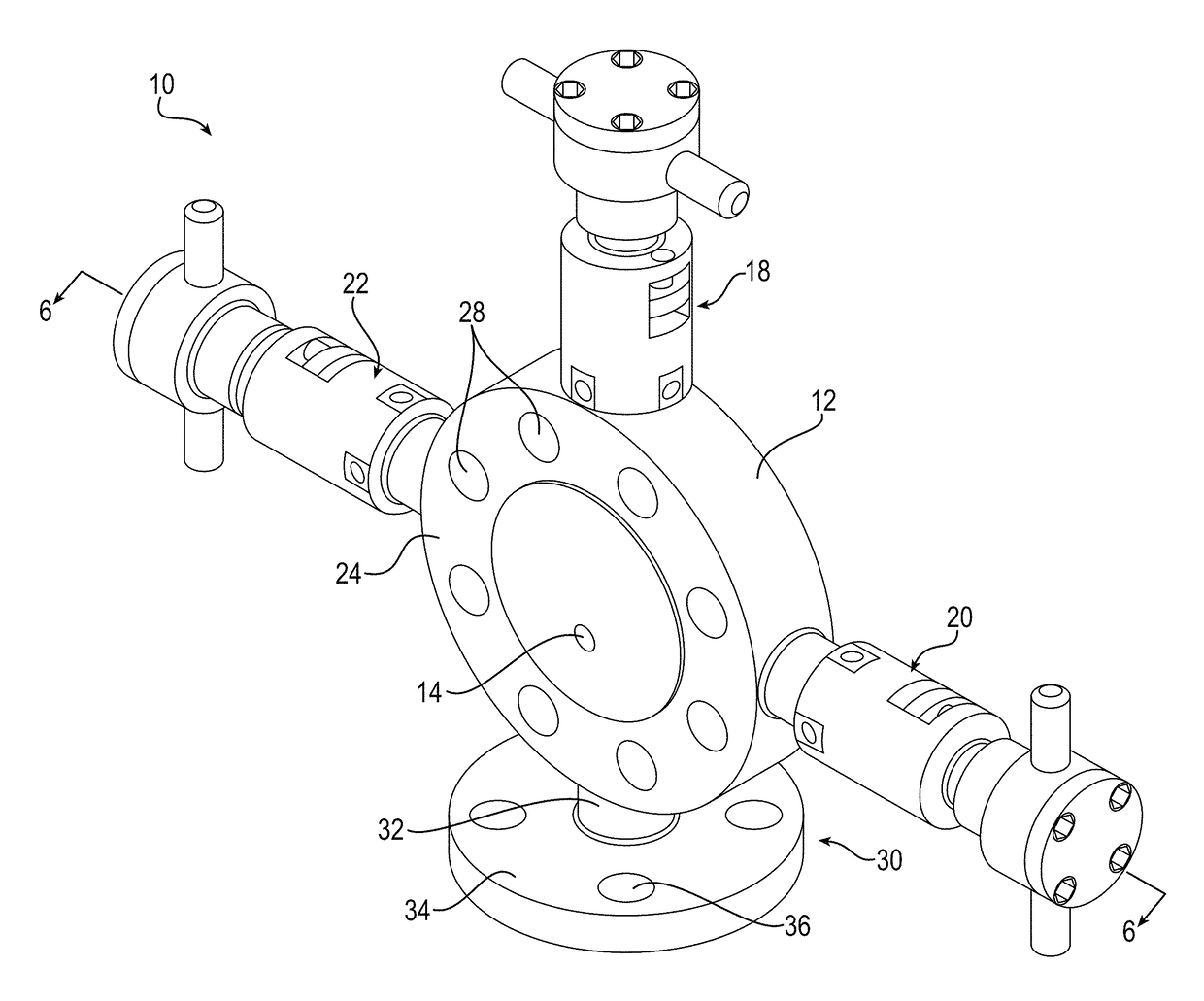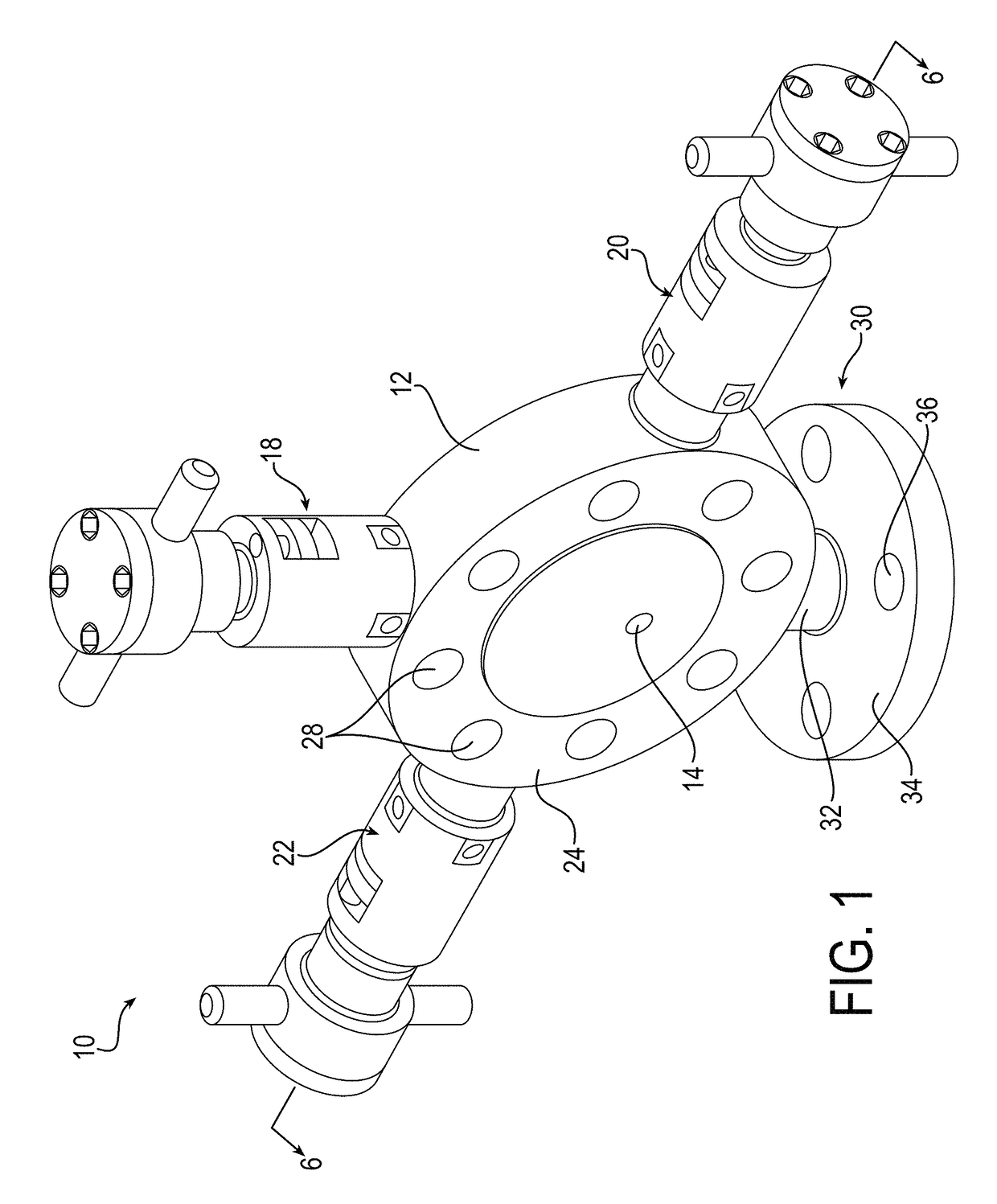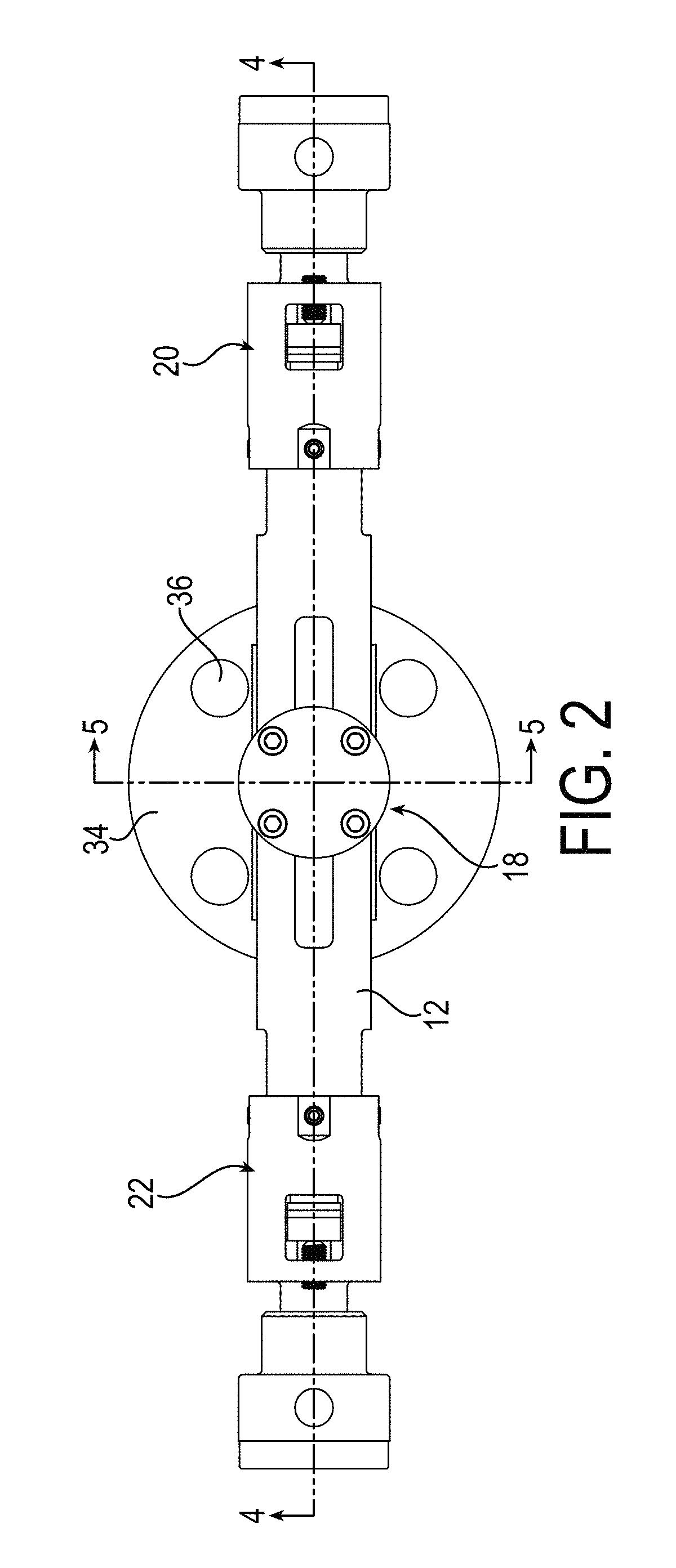Monoflange valve
a technology of monoflanges and valve bodies, applied in the field of monoflange valves, can solve the problems of processing fluids clogging in the valve body, limiting the space available for radiographic examination, and reducing the fluid flow characteristics of known monoflange designs, etc., to achieve the effect of increasing the length and tortuosity of the flow path, limiting the space available for radiographic examination, and increasing the length of the flow path
- Summary
- Abstract
- Description
- Claims
- Application Information
AI Technical Summary
Benefits of technology
Problems solved by technology
Method used
Image
Examples
Embodiment Construction
[0030]The principles of the present invention have particular application to monoflange valve assemblies for use with severe service media, such as Phosgene (COCl2), Chlorine (Cl), Anhydrous Ammonia (NH3), Cyanide (CN), and / or other severe media, including those from Category M of ASME B31.3, and thus will be described below chiefly in this context. It is also understood, however, that principles of this invention may be applicable for use in other applications, including non-severe media applications, where it is desirable to enhance fluid flow characteristics during use, or to facilitate welding and / or inspection of the monoflange valve assembly before use in such applications.
[0031]Turning to FIGS. 1-3, an exemplary monoflange valve assembly 10 is shown. The monoflange valve assembly 10 includes a main body portion 12 having an axial inlet fluid passage 14 (shown in FIG. 1), an outlet fluid passage 16 (shown in FIG. 3), and one or more valve assemblies 18, 20, 22 for enabling or ...
PUM
 Login to View More
Login to View More Abstract
Description
Claims
Application Information
 Login to View More
Login to View More - R&D
- Intellectual Property
- Life Sciences
- Materials
- Tech Scout
- Unparalleled Data Quality
- Higher Quality Content
- 60% Fewer Hallucinations
Browse by: Latest US Patents, China's latest patents, Technical Efficacy Thesaurus, Application Domain, Technology Topic, Popular Technical Reports.
© 2025 PatSnap. All rights reserved.Legal|Privacy policy|Modern Slavery Act Transparency Statement|Sitemap|About US| Contact US: help@patsnap.com



